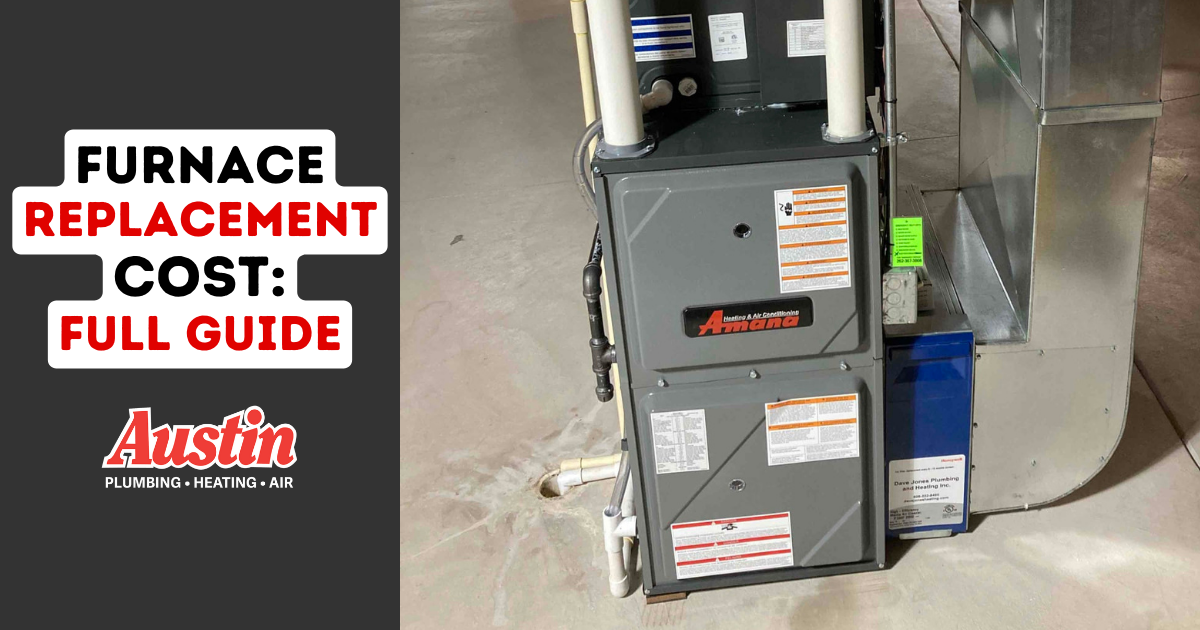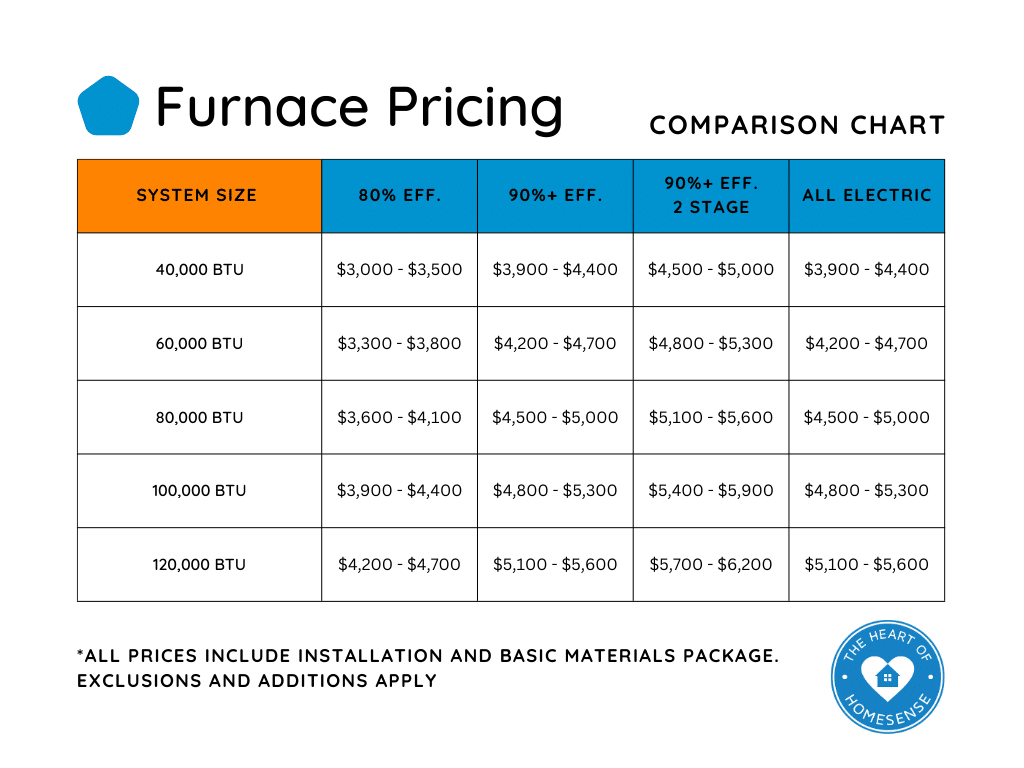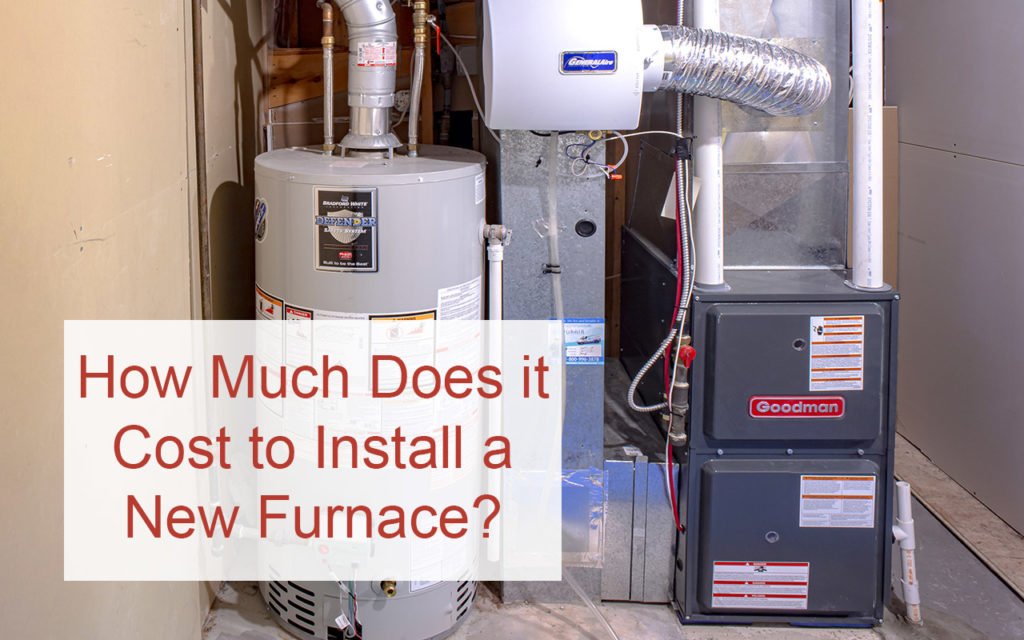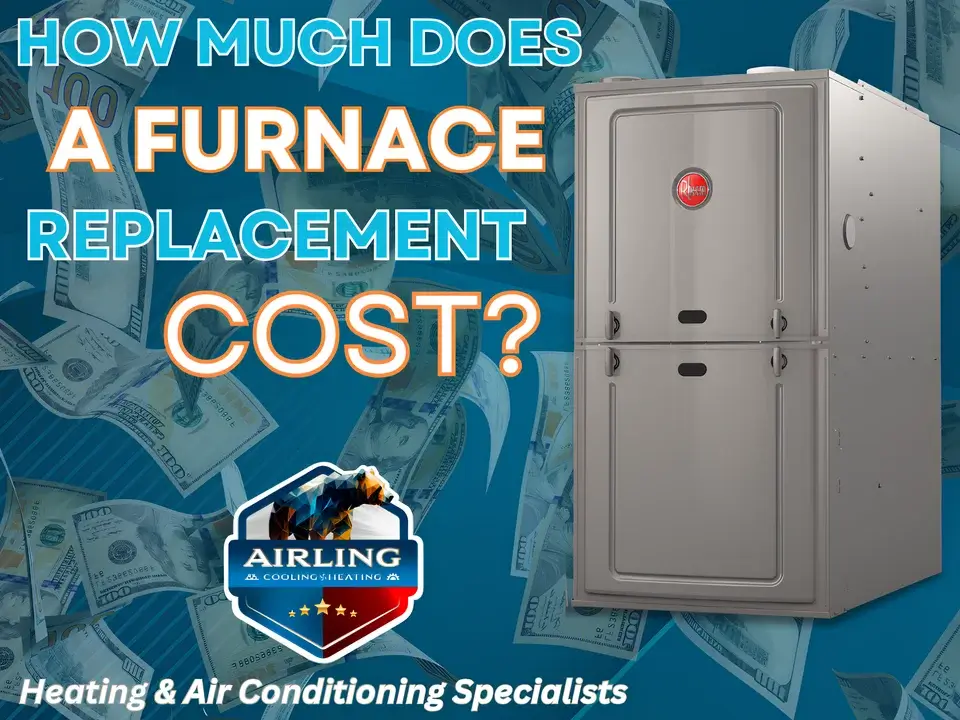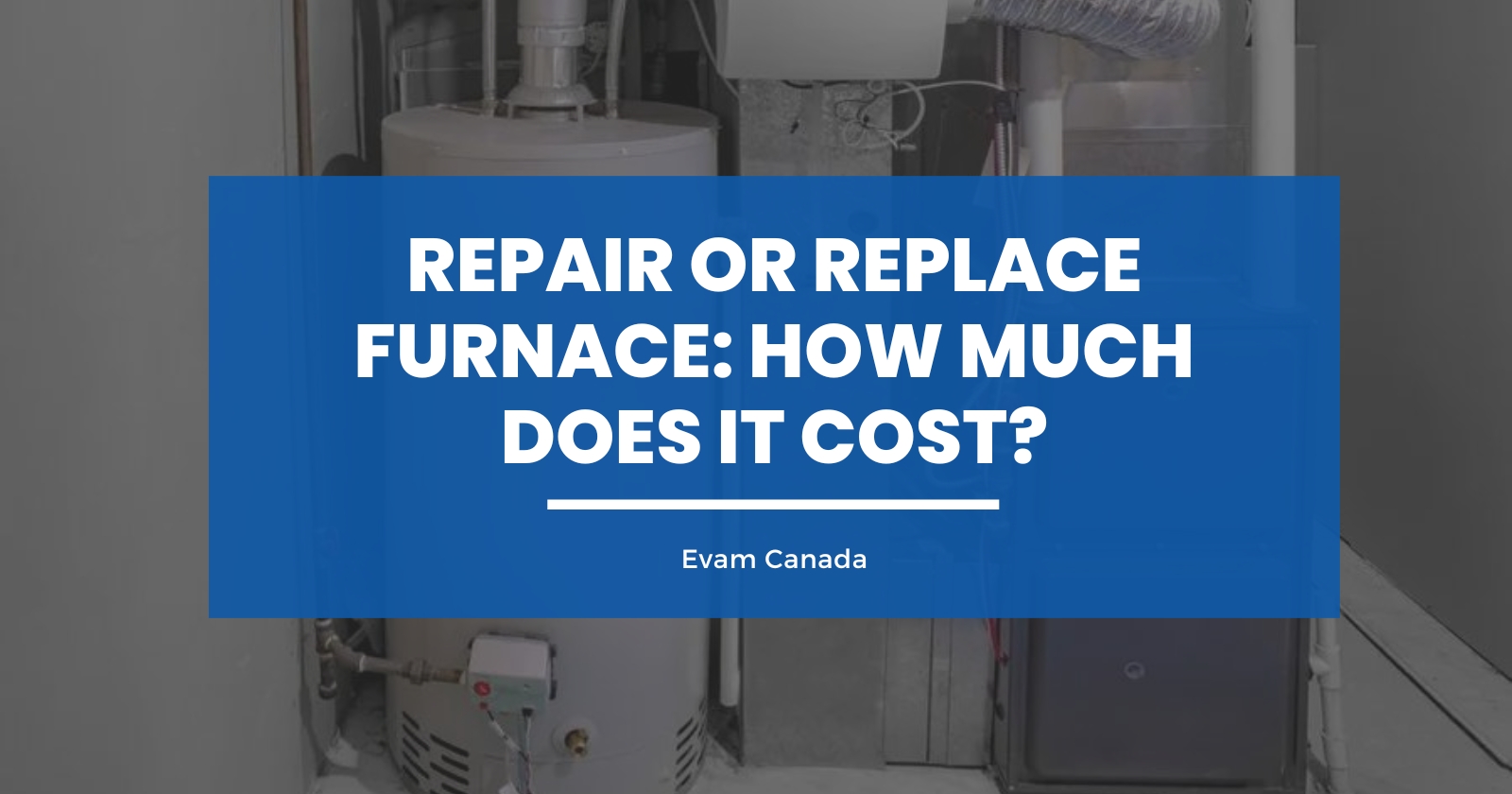How Much Does It Cost To Replace Furnace

One of the most frustrating experiences for any homeowner is waking up on a cold winter morning to discover their furnace isn't working. Suddenly, comfort turns to concern, and the question of cost looms large. Before you immediately panic about a full furnace replacement and its associated expense, let's explore a practical troubleshooting approach to help you understand the problem and potentially save some money. This guide will break down common issues, DIY checks, and when it's absolutely necessary to call in the professionals.
Diagnosing the Problem: Is it Really Furnace Replacement Time?
The first step is determining whether the problem truly necessitates a new furnace. Many furnace issues are repairable, and a replacement should only be considered after exhausting other options. Here's a systematic approach to diagnosis:
Step 1: The Obvious Checks (No Tools Required!)
Start with the simplest things first. You'd be surprised how often the solution is a simple oversight.
- Check the Thermostat: Is it set to "Heat"? Is the temperature setting higher than the current room temperature? Make sure the thermostat is functioning correctly. Try replacing the batteries, even if they seem okay. A low battery can cause erratic behavior.
- Inspect the Circuit Breaker: Locate the breaker box for your home. Find the breaker labeled "Furnace" (or similar). Is it tripped (in the "off" position)? If so, flip it all the way to the "off" position and then back to the "on" position. Sometimes, a furnace trips the breaker due to a power surge or overload.
- Examine the Emergency Shut-Off Switch: Furnaces often have an emergency shut-off switch, typically located near the unit itself. Make sure it's in the "on" position. It often looks like a light switch painted red.
- Check the Air Filter: A dirty air filter is one of the most common causes of furnace problems. A clogged filter restricts airflow, causing the furnace to overheat and potentially shut down. Remove the filter and hold it up to the light. If you can't see much light through it, it's time for a replacement.
DIY Action: Replace the air filter. This is a simple and inexpensive task that can often resolve heating issues. Use the correct size and type of filter recommended for your furnace.
Step 2: Listening for Clues (No Tools Required, But Pay Attention!)
Your furnace communicates through sounds. Listen carefully for any unusual noises.
- No Sound at All: If you hear absolutely nothing when the thermostat calls for heat, it could indicate a power issue or a problem with the inducer motor (more on that later).
- Clicking or Humming: These sounds might indicate a problem with the igniter or gas valve.
- Banging or Rattling: These noises could be caused by loose ductwork, a failing blower motor, or debris inside the furnace.
- Whistling: A whistling sound often indicates an air leak in the ductwork.
Step 3: Basic Checks with Simple Tools (Proceed with Caution!)
These checks require a bit more care and the use of basic tools. If you're uncomfortable with any of these steps, it's best to call a professional.
- Checking the Pilot Light (For Older Furnaces): Important Safety Note: If you smell gas, immediately evacuate the area and call your gas company. Do NOT attempt to relight the pilot light yourself. For furnaces with a pilot light, locate the pilot light assembly. Follow the manufacturer's instructions for relighting the pilot. If the pilot light won't stay lit, there could be a problem with the thermocouple.
- Testing the Flame Sensor (Requires a Multimeter): The flame sensor is a small metal rod located near the burner. It detects the presence of a flame and allows the furnace to continue operating. If the flame sensor is dirty or faulty, the furnace may shut down shortly after starting. To test the flame sensor, you'll need a multimeter. With the furnace off, disconnect the wire from the flame sensor. Set the multimeter to measure DC microamps. Connect the multimeter leads to the flame sensor and the furnace chassis. Turn the furnace on. The multimeter should read a DC microamp reading (typically between 2 and 10 microamps). If the reading is zero or very low, the flame sensor is likely faulty and needs to be cleaned or replaced. Important Safety Note: Turn off the power to the furnace before disconnecting or connecting any wires.
DIY Action: Cleaning the Flame Sensor (If you're comfortable and have a multimeter). Turn off the power to the furnace. Disconnect the wire from the flame sensor. Use a piece of fine-grit sandpaper or steel wool to gently clean the flame sensor. Reconnect the wire and turn the power back on. Observe if the furnace now operates correctly.
Step 4: Knowing When to Call the Professionals
There are many furnace issues that are best left to the experts. These include:
- Gas Leaks: If you suspect a gas leak, immediately evacuate the area and call your gas company or a qualified HVAC technician.
- Carbon Monoxide Concerns: If your carbon monoxide detector is alarming, evacuate the area and call the fire department. Carbon monoxide is a deadly gas, and it's crucial to address any potential leaks immediately.
- Electrical Issues: Working with electricity can be dangerous. If you're not comfortable working with electrical components, call a qualified electrician or HVAC technician.
- Refrigerant Leaks (Heat Pumps): Heat pumps use refrigerant to transfer heat. If you suspect a refrigerant leak, call a qualified HVAC technician. Handling refrigerant requires specialized equipment and training.
- Complex Mechanical Issues: If you've checked the basics and the furnace still isn't working, there could be a more complex mechanical problem, such as a faulty inducer motor, blower motor, gas valve, or heat exchanger. These repairs require specialized knowledge and tools.
- Age of the Furnace: If your furnace is 15-20 years old or older, it may be nearing the end of its lifespan. Even if you can repair it now, it's likely to experience more problems in the future. Consider getting quotes for a new furnace.
How Much Does it *Really* Cost to Replace a Furnace?
Now, let's address the question you've been waiting for. The cost of replacing a furnace can vary significantly depending on several factors:
- Type of Furnace: Gas furnaces are the most common type, but electric furnaces and oil furnaces are also available. Gas furnaces generally have a higher upfront cost but can be more efficient in the long run.
- Efficiency Rating (AFUE): AFUE (Annual Fuel Utilization Efficiency) is a measure of how efficiently a furnace converts fuel into heat. The higher the AFUE rating, the more efficient the furnace. Higher-efficiency furnaces typically cost more upfront but can save you money on your energy bills over time.
- BTU Rating: BTU (British Thermal Unit) is a measure of the furnace's heating capacity. The BTU rating should be appropriate for the size of your home. A furnace that is too small won't be able to adequately heat your home, while a furnace that is too large will cycle on and off frequently, wasting energy.
- Brand and Model: Different brands and models of furnaces have different features and price points. Some brands are known for their reliability, while others are more affordable.
- Installation Costs: Installation costs can vary depending on the complexity of the installation. Factors that can affect installation costs include the accessibility of the furnace, the need for ductwork modifications, and the cost of labor in your area.
- Permits and Inspections: In many areas, you'll need to obtain a permit and have the installation inspected by a local building inspector. These costs can add to the overall cost of the furnace replacement.
General Cost Estimates:
- Basic Gas Furnace (80% AFUE): $3,000 - $5,000 (including installation)
- Mid-Efficiency Gas Furnace (90-95% AFUE): $4,000 - $7,000 (including installation)
- High-Efficiency Gas Furnace (95%+ AFUE): $6,000 - $10,000+ (including installation)
- Electric Furnace: $2,000 - $5,000 (including installation) - Note: Electric furnaces are generally less expensive to purchase but can be more expensive to operate depending on electricity costs in your area.
Getting Accurate Quotes:
The best way to get an accurate estimate of the cost of replacing your furnace is to get quotes from several qualified HVAC contractors. Be sure to ask for a detailed breakdown of the costs, including the cost of the furnace, installation, permits, and any other fees. Also, ask about any rebates or incentives that may be available from your utility company or government. When getting quotes, make sure the contractors are licensed and insured. Ask for references and check online reviews. A good contractor will be able to assess your home's heating needs and recommend the right furnace for your budget and comfort level.
Making the Decision: Repair or Replace?
Once you have a diagnosis and cost estimates for both repair and replacement, you can make an informed decision. Consider the following factors:
- Age of the Furnace: If your furnace is old (15-20 years or older), replacement is often the better option, even if a repair is possible. An older furnace is likely to be less efficient and more prone to breakdowns.
- Cost of Repair vs. Replacement: If the cost of repair is close to the cost of replacement, replacement is usually the better option.
- Energy Efficiency: A new, high-efficiency furnace can save you money on your energy bills over time.
- Comfort: A new furnace can provide more consistent and comfortable heating.
- Peace of Mind: A new furnace comes with a warranty, which can give you peace of mind knowing that you're covered in case of a breakdown.
Financing Options:
Furnace replacement can be a significant expense. Many HVAC contractors offer financing options to help you spread out the cost over time. You may also be able to get a home equity loan or line of credit to finance the replacement.
Final Thoughts:
Facing a furnace problem can be daunting, but with a systematic approach, you can often identify the issue and potentially save money. Remember to prioritize safety, and don't hesitate to call a qualified HVAC technician when needed. A well-maintained and properly functioning furnace is essential for a comfortable and safe home.
